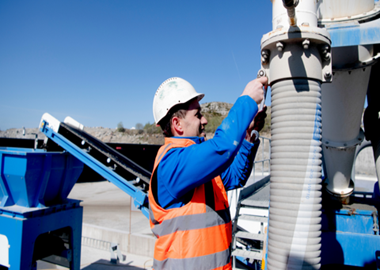29 September 2021
As featured in Waste Management Review
Although trenchless technology has advanced, and hydro excavation (often also referred to as Non Destructive Digging or NDD) has become a preferred method for the installation of services and pipework in civil engineering, it comes with a costly waste burden for drilling operators.
The by-product of hydro excavation is slurry, often laden with chemicals, which is difficult to dispose of or reuse responsibly due to its substantial volume and weight, but with the introduction of CDE’s HYDRO:TIP™ solution to the local market operators can now process slurry with ease and efficiency.
Often, drilling mud is mixed with bentonite, a soft clay which is mixed in because it expands to prevent the collapse of an area during drilling.
While necessary for engineers, it leaves drilling operators with an onerous waste disposal issue at the end – tons of waste, clay-logged slurry.
This waterlogged, thick mud and clay by-product is financially prohibitive as operators face high gate fees at landfill sites due to its substantial volume and weight, which is essentially around 70% water. Indeed, some landfills are reluctant to accept this bulky waste at all.
While there are alternative disposal methods, including burying the material in ponds and fields to dry, these approaches come with their own environmental and legal risks due to possible leaching of hydrocarbons or TPH (total petroleum hydrocarbons).
With CDE’s HYDRO:TIP™, operators can not only handle this waste mud in a cost-effective and responsible manner, but they can recover recyclable materials from it that can be re-sold to generate additional revenue streams.
Green foundations
Suitable for urban environments, HYDRO:TIP™ enables hydro excavation fleets to set up closer to extraction sources to reduce transport time, cost and fuel emissions.
It achieves total landfill diversion with solids recovered from hydro excavation activities being 100% reusable in drainage rock, bedding sand and clays for road base
It also features an installed power base of 63kW, which is significantly less energy-intensive than a 20-tonne excavator operating at 90kw. In addition, HYDRO:TIP™ dewaters material twice as fast as conventional systems resulting in a reduction of total energy consumption by two-thirds.
Rapid Discharge
It utilises high frequency screens to ensure maximum dewatering efficiency and separation of waste material, and, as an automated system, allows tankers to discharge their loads directly into HYDRO:TIP™, eliminating the need for a plant operator and excavator.
This rapid ‘direct tip’ process enables waste material to be processed at the fastest rate possible, minimising downtime and ensuring tanker fleets are fully utilised by getting them back on the road and on their way to the next location.
Automation
Most of the functions of CDE’s HYDRO:TIP™ are automated, therefore minimal operator input is required, saving on time and cost. Additionally, by harnessing the HYDRO:TIP solution to process drilled mud at bespoke waste treatment sites operators can remove the need for a dedicated excavator and operator to dig out pits or mix sawdust for water absorption.
The system’s modular arrangement is also scalable depending on fleet size or requirement for surge capacity which allows companies to grow sustainably. Additionally, it can integrate seamlessly into downstream CDE systems such as the AggMax™, EvoWash™ and AquaCycle™ to recover sand and aggregates and recycle process water.
Safety is key
HYDRO:TIP™ has been designed with safe access platforms to enable in-place washout of tankers, while keeping the operator safely out of harm’s way. Its stairs and walkways are standards-compliant allowing for safe access for inspection and maintenance.
Access to key components for normal maintenance and inspection is via built-in access platforms, while replacing large pumps and motors can be performed with minimal stripping of the machine.
In addition to standard safety features including isolation systems, emergency stops and guarding, HYDRO:TIP™ includes level and position sensors to enable safe-automated running as well as a clear visual traffic light system to inform the operator of the unit’s readiness and status.
With recent changes in state government landfill levies, dumping behaviour has significantly changed. This, alongside a high level of hydro excavation operations across Australia, has resulted in a large appetite for the HYDRO:TIP’™s unique technology.
In the coming months, CDE will install four HYDRO:TIP™ units across Australia.




